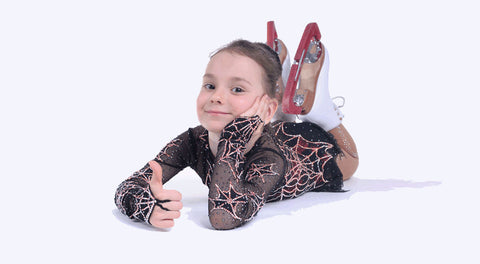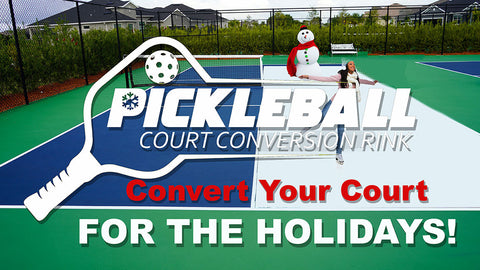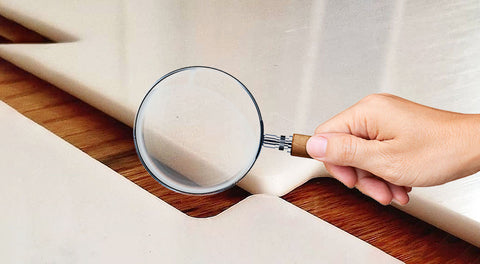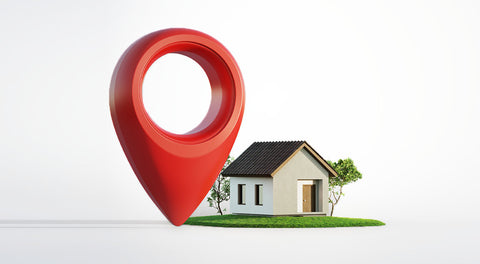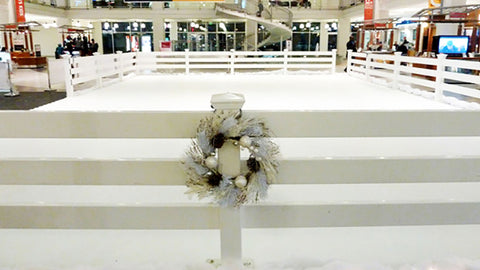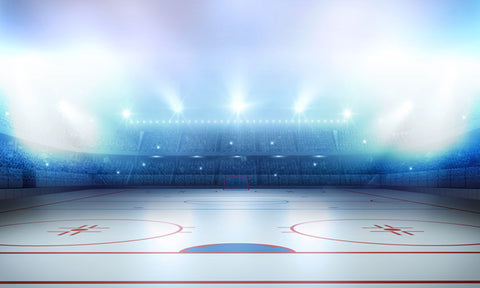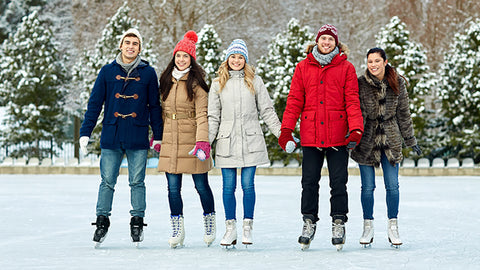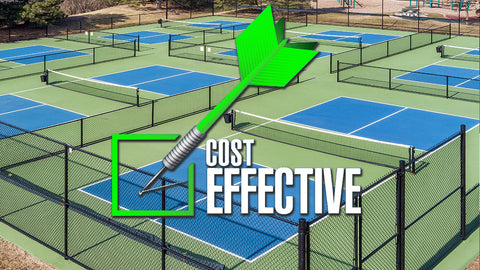Best roller skating surface for 2026
Was it because of TikTok and Instagram?
The need to find new hobbies?
Or an R&B legend rollerskating on stage at Vegas?
We’re not sure, but roller skating has been one of the biggest trends since the 2020 pandemic.
In its over 300-year history, we’ve seen these spikes, and it’s back again, showing that it is a timeless sport and pastime.
More people are buying skates and enjoying time on neighborhood rinks.
Some are even building roller rinks in their homes or turning rinks into lucrative businesses.
Build Your Own Roller-Arena With The PolyGlide Pro-Skate Roller Panel
Although we primarily deal with ice skating, we’ve also received questions on the best roller skating surface for 2022.
Roller skates have wheels, which are usable on almost any flat surface.
But, of course, all surfaces aren’t the same.
Here are the best roller skating surfaces and how you can create a rink of your own.

Does the surface material matter?
Beginner skaters want an enjoyable, safe skating experience.
The right skates can help, but the right surface is even more important.
For instance, skating with hard wheels on a slippery surface can mean less grip and more falls.
You need at least 2-3 months of consistent sessions to get good at skating, and practicing on the wrong surface can be challenging.
Advanced skaters want to push their limits.
They want to pull off spins, fishtails, skating backward, and even jumps.
They need a surface that can keep up with them.
So yes, the surface matters.
If you’re in a skating rink, you’ll realize they have different materials that change how the skates feel in motion.
Some people love to skate outdoors at a neighborhood park or recreational court.
Others prefer the community and vibe of a skating rink or park.
Whatever your preference, here are some of the surfaces you’ll encounter on your skating journey:
Concrete flooring
So what surfaces can you roller skate?
Concrete floors are one of the first and most common skating surfaces you will encounter.
These surfaces are smooth and built for tricks and speed.
Best of all, they work indoors and outdoors.
Rinks with concrete floors are the most durable, as they are often the floor of the rest of the building or space.
Rink owners sometimes seal the floor with a compound to make skating more enjoyable.
Concrete flooring works best for advanced skaters as they are less likely to fall.
However, falling on concrete does a number on your joints, and you’ll pick up some bruises too.
Indoor concrete rinks are costly and challenging to install. However, it is the cheapest to maintain.
They also need resurfacing with a wax or varnish compound, but from an aesthetic standpoint, it would not stand out.

Asphalt, brick, and pavers
Are you ready to hit the black carpet?
If you are not thinking about building or visiting a rink, you can skate right outside.
Driveways, cul-de-sacs, car parks, bike lanes, and skate parks have asphalt surfaces.
Other common outdoor surfaces include bricks and pavers.
Of course, if you own the area, this surface is free.
For an outdoor skating rink, you’re just marking off the area.
Like concrete, asphalt is smooth but can leave you with bumps and bruises, and take off a bit of skin as well.
Asphalt also swells in the hot summer months, creating an uneven surface.
Bricks and pavers have bumps that rough the surface, which can lead to injury for an inexperienced skater.
Wood flooring and laminate flooring
Now it’s time to go indoors.
Wood flooring is a popular indoor roller rink surface.
These rinks are installed with oak, maple, or walnut panels.
Laminate flooring uses synthetic material to create panels with a wood-like feel.
These are cheaper than hardwood but not as durable.
Although one is better, wood and laminate floors are aesthetically pleasing, smooth, and long-lasting.
While they do not have the same grip and speed as concrete, they are safe to use, and falling on them does not hurt as much.
On the flip side, these floors are hard to maintain.
Flooring materials are generally made for wear and tear.
However, overuse and excessive force from toe stops can cause cracks and splinters.
It’s also susceptible to swelling and water damage.
These are the costliest to replace if they are damaged.
If you have the time or resources to care for these floors, they will take care of your skaters.

Sport Court Floors
Plastics have been a part of roller skating surfaces for decades, and polypropylene is a common type.
These thin tiles interlock to create a flat skating surface.
Polypropylene tiles are used for both indoor and outdoor soccer, roller hockey, volleyball, roller derby, and much more.
These tiles are customizable in different sizes and colors and are softer, which can ease the stress on the joints.
Some tiles also contain small holes that act as ventilation, so they should stand up to most changes in weather.
There are many polypropylene tile providers, so it’s easy to buy an inferior brand, which wears away after a short time.
Some aren’t made with eco-friendly materials, so this could be a deterrent.
(Non-infused) Synthetic Ice
What does ice have to do with roller skating?
Synthetic ice has been around for decades as an excellent alternative for ice skaters.
These are panels made of special textured polyethylene that provides a "smooth roll" and quite durable.
Synthetic ice can last up to 10 years with proper maintenance.
You connect the tiles on a flat surface, and you can play hockey, figure skate, or even take up curling.
And yes, you can lace up your roller skates instead of your metal ice skates!
High-quality synthetic ice is usually infused with a slip surface agent or conditioner to help ice skaters glide across the surface.
It is also available as "non-infused" by some manufacturers which alows the skate wheel to grip the surface better.
They are also usable all throughout the year.
Add the slip conditioner and easily convert it into an ice rink!

What surface is best to roller skate on?
When it comes to advanced skaters, concrete and asphalt are your friends.
You can go outdoors, find a safe, level spot, and start skating.
For rinks, hardwood surfaces and synthetic ice are your best bet.
These provide the right mix of safety, durability, and performance.
For a long-term investment, non-infused synthetic ice panels give you a bigger bang for your buck.
Can you make a roller skating surface at home?
The pandemic has caused people to look for at-home solutions, and we’ve been asked, “Can I make a rink at home?”
Of course, you can!
These rinks are big enough for family or friends and neighbors.
Making a rink requires a few simple steps.
Most of these steps are the same we give our customers who set up at-home ice skating rinks:
- Find your space: Is it indoors or outdoors? Indoor examples include garages, basements, and spare rooms. Outdoor spaces are backyards and decks. This space should be flat and level.
- Measure your space: How many square feet is your rink? Use a measuring tape and other tools to get accurate dimensions.
- Clear the floor: Your rink must start on level ground. That may mean removing material or adding plywood to keep the ground even.
- Choose and install your rink: Synthetic ice is excellent for indoor and outdoor use. Hardwood works indoors but can be more expensive long-term. Installing synthetic ice is as simple as connecting the panels for the space. For other surfaces, you may need a contractor to help.
- Consider rink walls: For outdoor spaces, rink walls help keep your kids safe and add to the appeal of the rink. Consider adding them!
- Time to skate: When everything is good to go, slap on your skates and have a blast!
Conclusion
Roller skating is a timeless pastime that will fluctuate in popularity.
Right now, it’s going through a purple patch, so if you have been thinking about starting a healthy, new hobby, now is the time.
The surface that you skate on can make or break your experience.
For a smooth surface that gives the right mix of speed, safety, grip, and durability, look no further than synthetic ice.
Get non-infused panels that can last years and help you have a great roller rink that everyone will enjoy.





